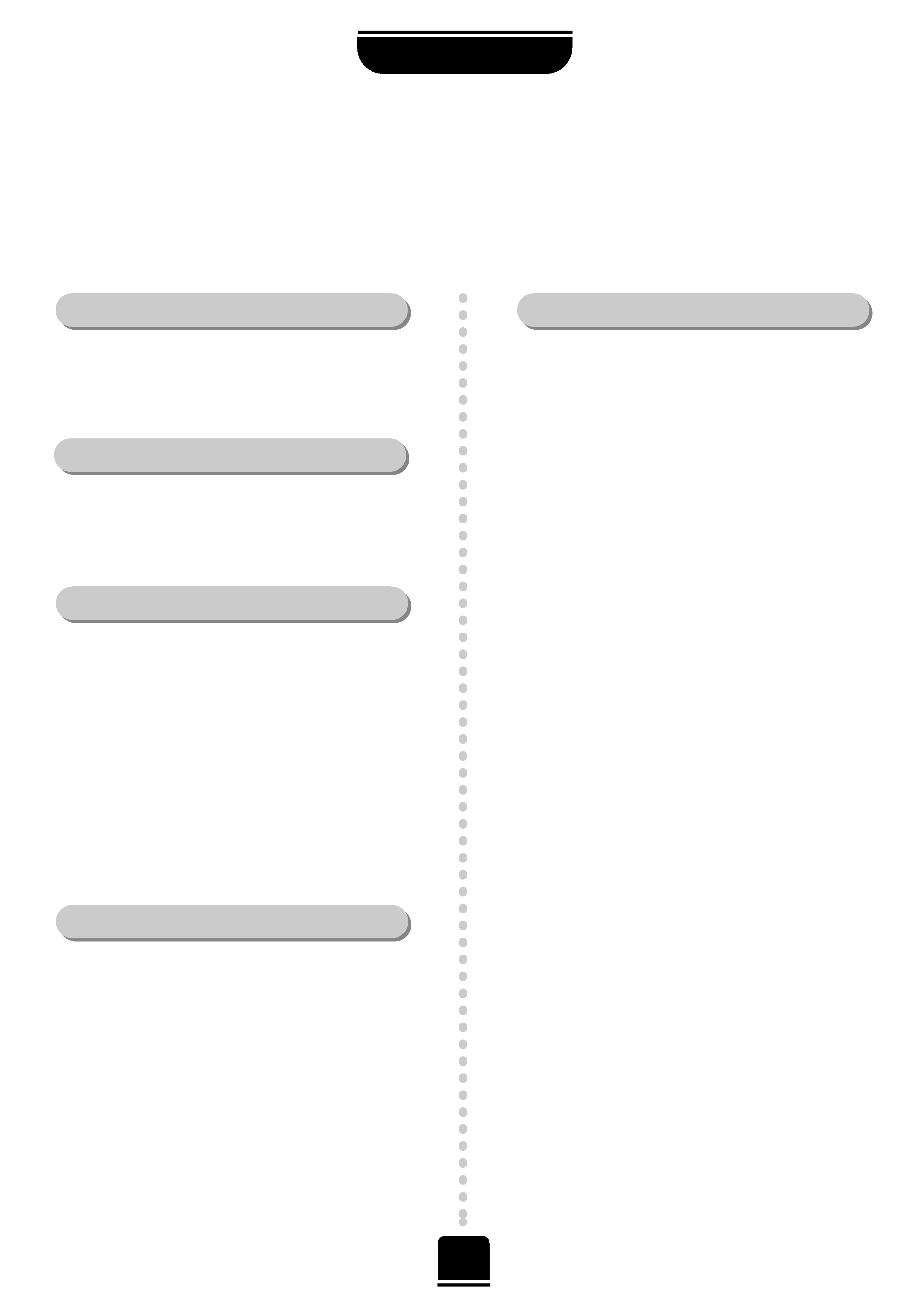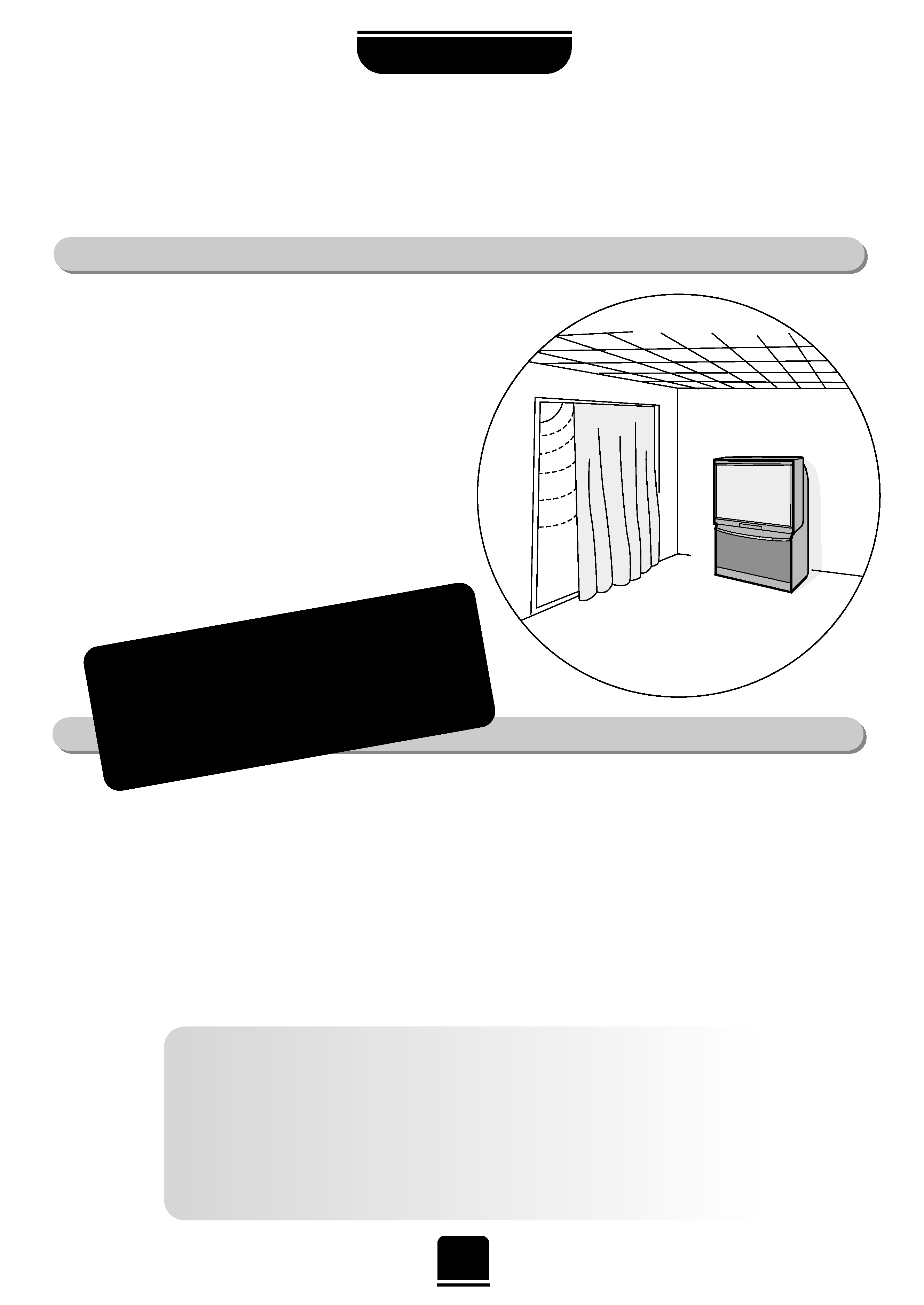
owner 's manual
colour television
50PH18P
61PH18P
TOSHIBA
The power to open people's eyes

2
Contents
CONNECTING OTHER EQUIPMENT
SETTING UP
ADDITIONAL FEATURES
NEX
TVIEW
TELETEXT
CONTROLS
SPECIAL SOUND FEATURES
FOR YOUR GUIDANCE
OTHER INFORMATION
For your safety Some do's and don'ts for you to be aware of
3
Installation and other points to follow
4
Your new television's remote control an at-a-glance guide
5
Connecting the speakers
6
Connecting and turning on your new TV
7
Choosing the language and system, Auto tuning
8
Manually tuning your TV an alternative to Auto tuning
9
Sorting programme positions
10
Manual fine tuning, programme skip
11
General controls subtitles, changing programme position
12
Sound controls volume, sound mute, bass boost, bass/treble/balance
12
Picture controls picture preferences, scan mode, digital noise reduction (DNR)
13
Picture controls adjusting the horizontal position and aspect ratio, still picture
14
The timer and time display informing the TV to turn on/off and time display
15
Panel lock disabling the buttons on the front of the TV
15
Stereo and bilingual transmissions stereo or dual language broadcasts
15
AV connections and input selection input and output sockets for connected equipment
16
NEX
TVIEW setting up and using NEXTVIEW
17
Dolby Digital
20
Dolby Pro Logic Surround Test Mode
21
Digital Surround Processor Surround sound features
22
Setting up
23
Auto and List modes
24
Control buttons
25
Front connections and controls
26
Back connections
27
The Menus a display of the main on-screen menus for your reference
28
Questions and Answers
29
Notes a page for you to record your own information
31
Index, Specifications and Accessories information on your television
32

3
For your safety
SETTING UP
This equipment has been designed and manufactured to meet international safety standards but, like any electrical
equipment, care must be taken if you are to obtain the best results and safety is to be assured. So, please read the
points below for your own safety. They are of a general nature, intended to help you with all your electronic
consumer products and some points may not apply to the goods you have just purchased.
DON'T remove any fixed cover as this may expose
dangerous voltages.
DON'T obstruct the ventilation openings of the
equipment with items such as newspapers,
tablecloths, curtains, etc. Overheating will cause
damage and shorten the life of the equipment.
DON'T allow electrical equipment to be exposed to
dripping or splashing or objects filled with liquids,
such as vases, to be placed on the equipment.
DON'T place hot objects or naked flame sources,
such as lighted candles or nightlights on, or close to
equipment. High temperatures can melt plastic and
lead to fires.
DON'T use makeshift stands and NEVER fix legs with
wood screws. To ensure complete safety, always fit the
manufacturer's approved stand or legs with the fixings
provided according to the instructions.
DON'T listen to headphones at high volume, as such
use can permanently damage your hearing.
DON'T leave equipment switched on when it is
unattended, unless it is specifically stated that it is
designed for unattended operation or has a standby
mode. Switch off using the switch on the equipment
and make sure your family know how to do this.
Special arrangements may need to be made for
infirm or handicapped people.
DON'T continue to operate the equipment if you are
in any doubt about it working normally, or it is
damaged in any way switch off, withdraw the mains
plug and consult your dealer.
ABOVE ALL NEVER let anyone, especially
children, push anything into holes, slots or any
other openings in the case this could result in a
fatal electric shock.
NEVER guess or take chances with electrical
equipment of any kind it is better to be safe
than sorry.
Leave at least 10cm clearance around the television to
allow adequate ventilation. This will prevent the TV
from overheating and consequential possible damage
to the TV. Dusty places should also be avoided.
Damage may occur if you leave the TV in direct sunlight
or near a heater. Avoid places subject to extremely high
temperatures or humidity, or locations where the
temperature is likely to fall below 5°C (41°F).
The mains supply required for this equipment is 230v
AC 50Hz. Never connect to a DC supply or any other
power source. DO ensure that the TV is not standing
on the mains lead. DO NOT cut off the mains plug
from this equipment, this incorporates a special Radio
Interference Filter, the removal of which will impair its
performance. In the UK, the fuse fitted in this plug is
5A, and is approved by ASTA or BSI to BS1362. It
should only be replaced by a correctly rated and
approved type and the fuse cover must be
refitted. IF IN DOUBT PLEASE CONSULT A
COMPETENT ELECTRICIAN.
DO read the operating instructions before you attempt
to use the equipment.
DO ensure that all electrical connections (including the
mains plug, extension leads and inter-connections
between pieces of equipment) are properly made and
in accordance with the manufacturers' instructions.
Switch off and withdraw the mains plug before making
or changing connections.
DO consult your dealer if you are ever in doubt about
the installation, operation or safety of your equipment.
DO
be careful with glass panels or doors
on equipment.
Air Circulation...
Do not...
Heat Damage...
Mains Supply...
Do...

Cleaning the screen and cabinet...
After turning off the power, clean the screen and cabinet with a soft, dry cloth. We
recommend that you do not use any proprietary polishes or solvents on the screen or cabinet
as this may cause damage.
Disposal...
When the set reaches the end of its useful life please dispose of it in accordance with Local
Government Regulations or at a recycling centre.
If stationary images generated by TELETEXT, CHANNEL IDENTIFICATION LOGOS, COMPUTER DISPLAYS, VIDEO
GAMES, ON SCREEN MENUS, etc. are left on the TV screen for any length of time, they will become
permanently ingrained.
If you use your television to display completely still images, or moving pictures which have a permanent still
image superimposed i.e. broadcast network logos, it is always advisable to reduce BOTH the brightness and
contrast settings.
THIS DAMAGE IS EXPENSIVE TO REPAIR AND IS NOT PROTECTED BY YOUR WARRANTY AS IT IS THE
RESULT OF MISUSE.
4
SETTING UP
Installation and
other points to follow
Locate the television away from direct sunlight and strong lights.
Soft, indirect lighting is recommended for comfortable viewing.
Place the TV directly on the floor or a sturdy platform. The
mounting surface should be flat and steady. If you install
the TV onto a soft floor covering, make sure that the
covering will not be damaged by the weight of the TV.
Use curtains or blinds to prevent direct sunlight
falling on the screen.
Always take great care when moving this TV as it
could mark polished floor surfaces or damage floor
coverings.
Where to install...
WARNING!
NEVER
LEAVE
A STA
TIONARY
IMAGE
ON THE
SCREEN
.

P
P
VTR/DVD
VTR/DVD
CT-90041
5
SETTING UP
Your new television's remote control
... For quick reference
to topics, please
see
the INDEX at the
end of
this manual.
Carefully slide the back cover downwards to reveal the battery compartment and make sure you
insert the batteries the right way round.
Suitable battery types for this remote are R03 or AAA.
Do not throw your old batteries into a fire, dispose of them in a designated disposal
area. Do not combine a used, old battery with a new one or mix battery types.
The performance of the remote control will deteriorate beyond a distance of
five metres or outside an angle of 30 degrees from the centre of the TV.
To display teletext
Selectable picture preferences
To mute the sound
To exit Menus
Bass Boost/Super Woofer
To alter the volume
Dolby Surround
Teletext control buttons
To change programme positions
and teletext pages
To bring up on-screen information and
for the teletext initial/index function
To select input from external sources
Stereo/bilingual reception
On-screen Menus
NEX
TVIEW button Electronic
Programming Guide for TV schedules
INFO button information on current
transmission from NEX
TVIEW provider and
for use with the F button for subtitles
Number buttons
The batteries... and the effective range of the remote...
Simple, at-a-glance reference of your remote control's buttons...
For On/Standby mode
Aspect ratio
Still Picture
These buttons will operate your
TOSHIBA VIDEO and DVD.
For the DVD you must press the
F button at the same time...
to switch ON/OFF, press
to STOP, press
to PLAY, press
to PAUSE, press
to FAST FORWARD/SKIP, press
to REWIND/SKIP, press
F button use with the colour buttons to
select additional teletext features
and with the VTR buttons for a
TOSHIBA DVD player
It also increases the speed of most functions
Please see
page 28
for
details of
the
main on-
screen
menus
To change programme positions and
teletext pages
To alter the volume
When using menus the arrows move
the cursor on the screen up, down, left
or right. ENTER to confirm your
selection
